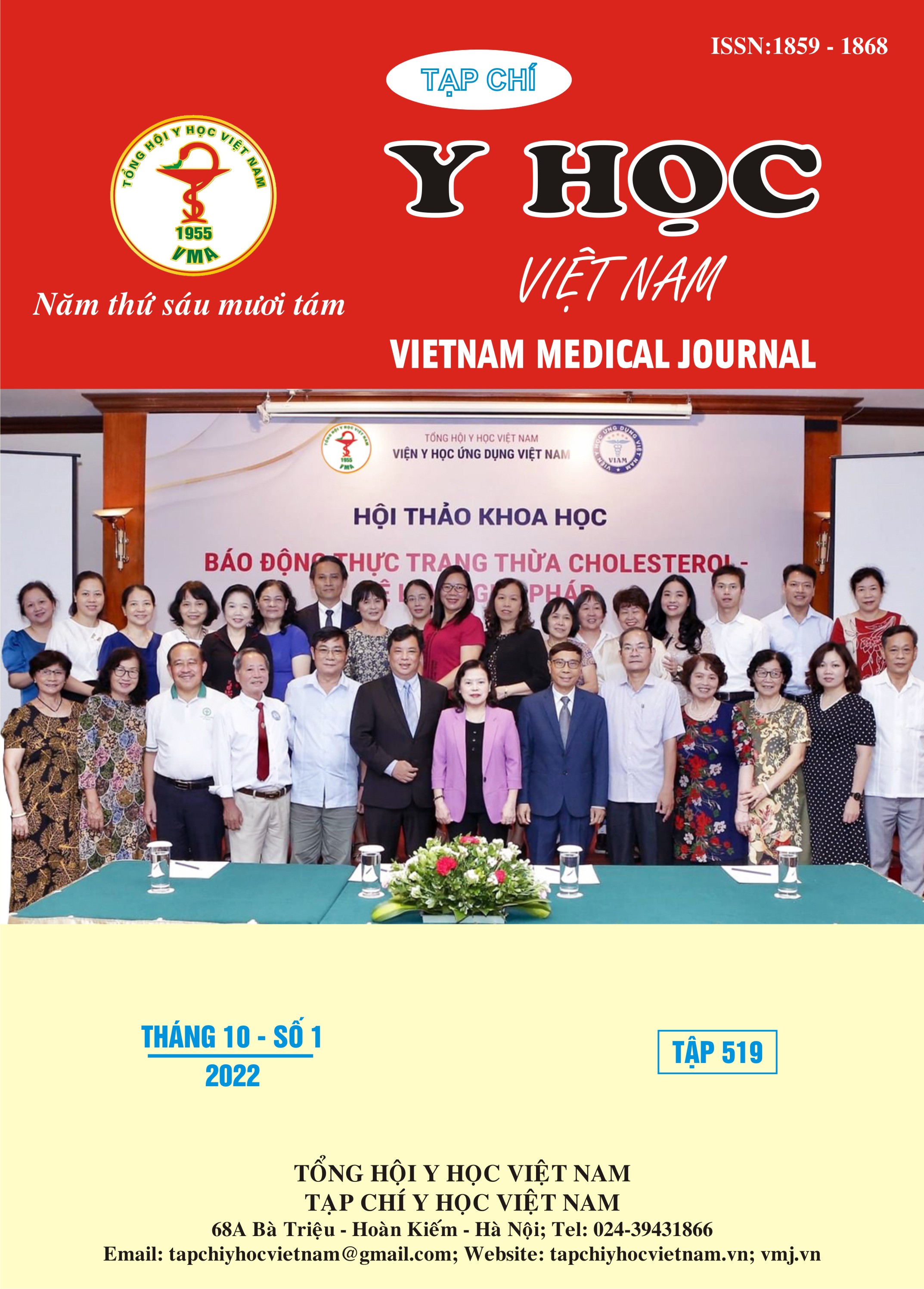EVALUATING THE AXONAL INJURY AND PREDICTING THE MOTOR FUNCTION RECOVERY IN SUPRATENTORIAL ACUTE STROKE PATIENTS
Main Article Content
Abstract
Object: To evaluate the axonal injury and to predict the motor function recovery in supratentorial acute stroke patients. Method: Cross-sectional descriptive study was performed on 28 patients, who had had a supratentorial acute stroke, and had an MRI at Bach Mai hospital from 9/2021 to 8/2022. Result: Almost patients had no change in the signal of the axons, which did not go through the infarct lesion (28,6%), the signals strongly decreased in patients whose axons completely stay inside the infarct lesion (32,1%). FA, ADC index of the axons on the infarct side is lower than on the opposite side (p<0,05). The patient group, who had the axons did not go through the infarct lesion or had no change in axonal signals, were higher at the rate of better motor function recovery after three months than the other groups (respective rates were 39,3% and 25%); the axons group, which stayed completely inside the infarct lesion or had remarkably decreased signal, was very poor at the rate of recovery (respective rates were 32,1% and 39,3%), p<0,05. FA index of the axons in the infarct side of the poor recovery group was smaller than the good recovery group, p<0.001. The ADC index is not different from these groups. Conclusion: The axonal signal, location versus the infarct lesion, and FA index of the axons in the infarct side are the factors that significantly predict motor recovery after three months in acute stroke patients.
Article Details
Keywords
Diffusion tensor imaging, Corticospinal Tract, acute stroke, Fractional anisotropy, Apparent diffusion coefficient
References
2. Jellison BJ, Field AS, Medow J, Lazar M, Salamat MS, Alexander AL (2004). Diffusion tensor imaging of cerebral white matter: a pictorial review of physics, fiber tract anatomy, and tumor imaging patterns. AJNR American journal of neuroradiology, 25(3):356-69.
3. Nelles M, Gieseke J, Flacke S, Lachenmayer L, Schild HH, Urbach H (2008). Diffusion tensor pyramidal tractography in patients with anterior choroidal artery infarcts. AJNR American journal of neuroradiology, 29(3):488-93.
4. Werring DJ, Toosy AT, Clark CA, et al (2000). Diffusion tensor imaging can detect and quantify corticospinal tract degeneration after stroke. Journal of neurology, neurosurgery, and psychiatry, 69(2):269-72.
5. Lai C, Zhang SZ, Liu HM, et al (2007). White matter tractography by diffusion tensor imaging plays an important role in prognosis estimation of acute lacunar infarctions. 80(958):782-789.
6. Ali GG, Elhameed AMA (2012). Prediction of motor outcome in ischemic stroke involving the pyramidal tract using diffusion tensor imaging. The Egyptian Journal of Radiology and Nuclear Medicine, 43(1):25-31.
7. Vũ Duy Lâm (2019). Đánh giá tổn thương bó tháp và một số chỉ số của cộng hưởng từ khuếch tán liên quan với chức năng vận động của bệnh nhân nhồi máu não, Viện nghiên cứu khoa học y dược lâm sàng 108.
8. Kim KH, Kim YH, Kim MS, Park CH, Lee A, Chang WH (2015). Prediction of Motor Recovery Using Diffusion Tensor Tractography in Supratentorial Stroke Patients With Severe Motor Involvement. Annals of rehabilitation medicine, 39(4):570-6.


